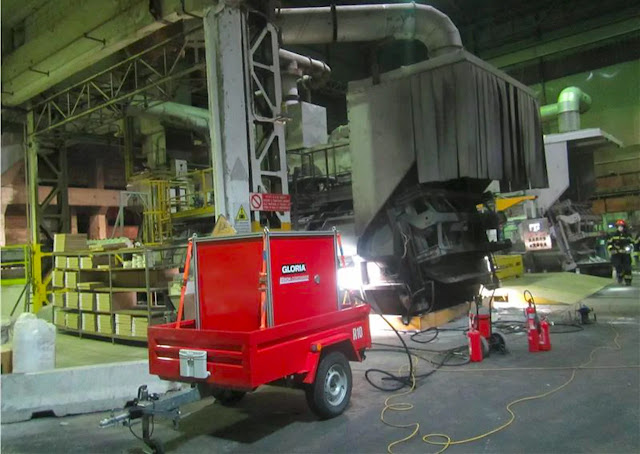It is never good when molten metal escapes its intended destination or holding location. Here is a recent story:
At about 4:30 this morning the Permanent Corps of local (town name
omitted) Fire Brigade, supported by the Voluntary Corps of the Fire Brigade of (town
name omitted), intervened in (town name omitted) at
a plant that produces aluminum to contain a fire .
The flames were caused by a spill in the area of the ovens during their loading maneuvers. The event did not cause any injuries and the damage was limited to a plant part of the production area.
The police and the white cross were also present on site. The (firemen work) lasted about 3 hours.
We are so thankful that no one was injured in this incident. This
incident could have been so much worse. We were told from a knowledgable source
the metal escape a transfer launder. The vast majority of explosions that the
Aluminium Plant Safety Blog has posted involve the molten metal that escaped.
This is another hazard whose importance varies with the age of the plant. As
with any hazard the longer a plant is in existence the more likely the hazard
has resulted in a near miss or incident. Molten metal hazards are no different.
Older plants have the luxury of history to acknowledge the past and properly
prepare for a future incident. In other words they learned for past failures
and successes. That does not mean older plants are immune to incidents, but in
our opinion they are less. Whereas newer plants are at a disadvantage in acknowledging
many hazards including but not limited to molten metal hazards. Why? From our
experience they assume that the plant was designed perfectly taking into
account potential hazards. Greenfield plants fail to realize in our opinion
that when the plant is designed. The architect, engineers, designers ask the
equipment manufacturers for what they need in terms of space and layout. Rarely,
do they consider safety as a whole. Here are some of our observations on the
most common mistakes with greenfield projects including but not limited to:
- Offices in front of furnaces
- Not enough fire extinguishing equipment
- Failure to coat any substrate where molten metal can come into contact with. Including maintenance pits (adjacent to casting pits, under furnaces), trenches, etc. with Wise Chem
- Buildings that are tight, meaning they do not have blast vents.
- Improper location of main electricity, fuel, etc. shutoffs.
Please comment.



No comments:
Post a Comment